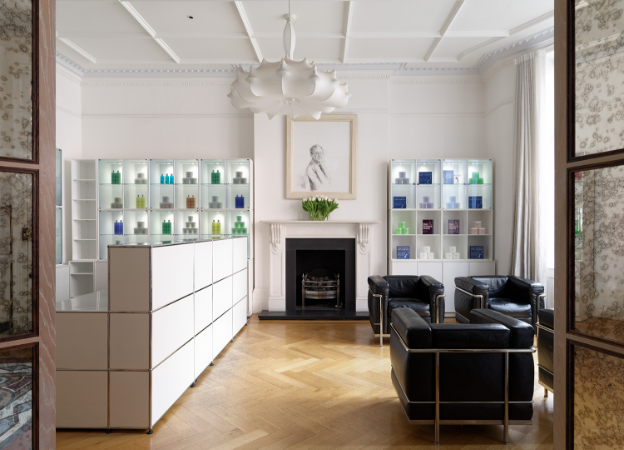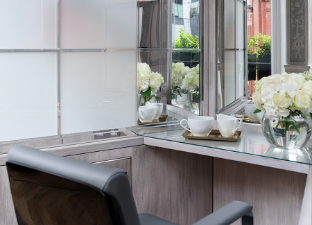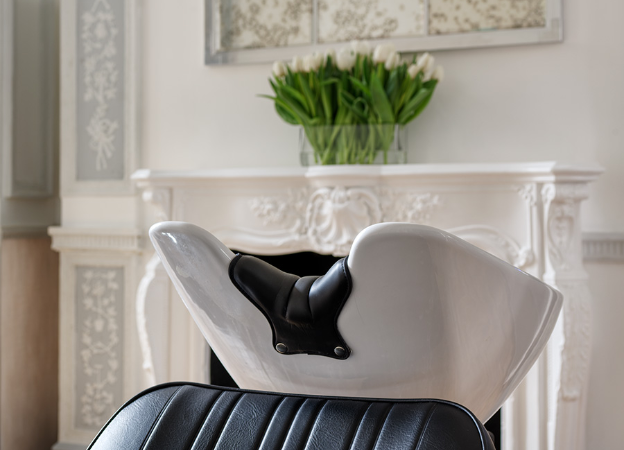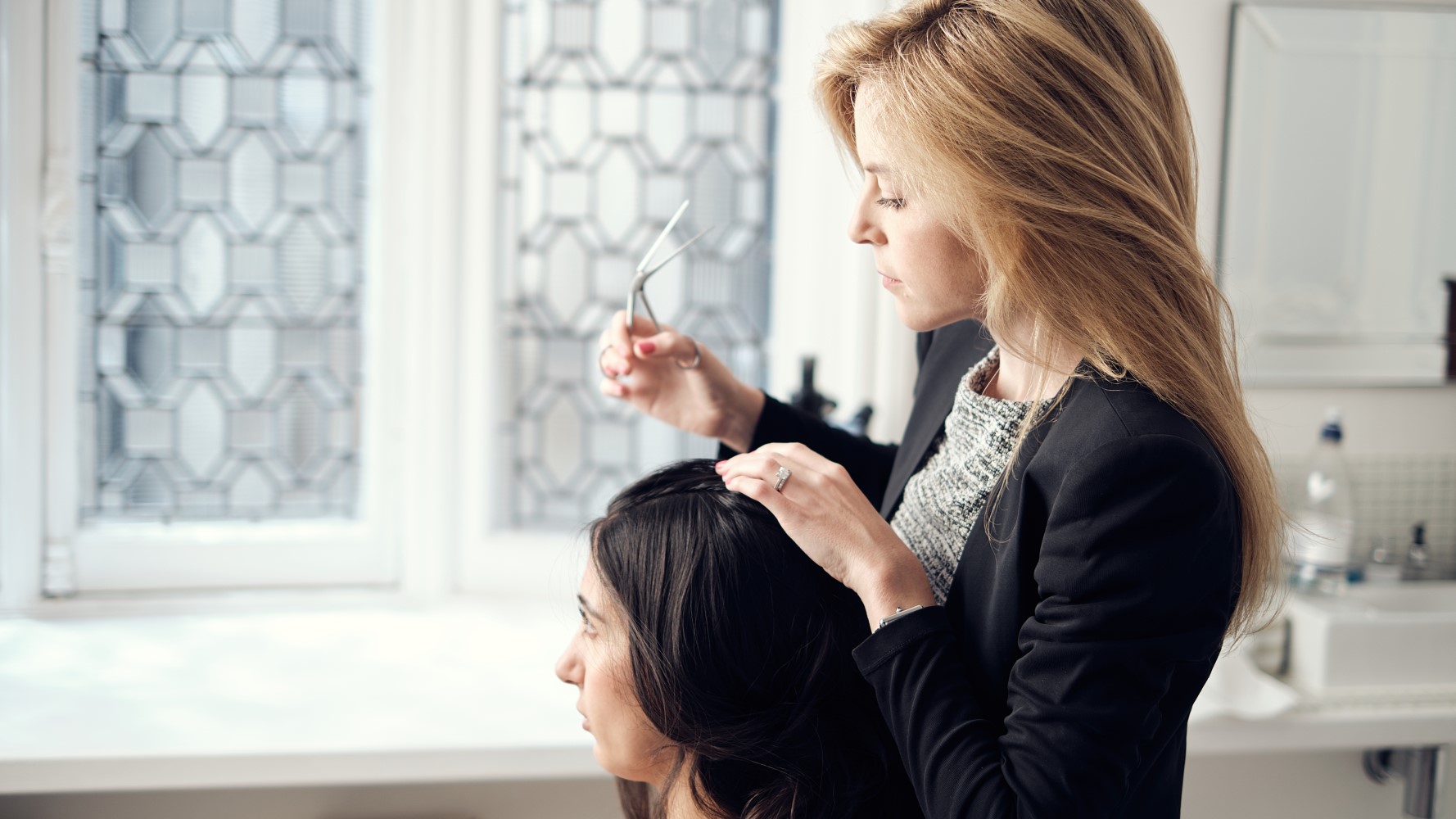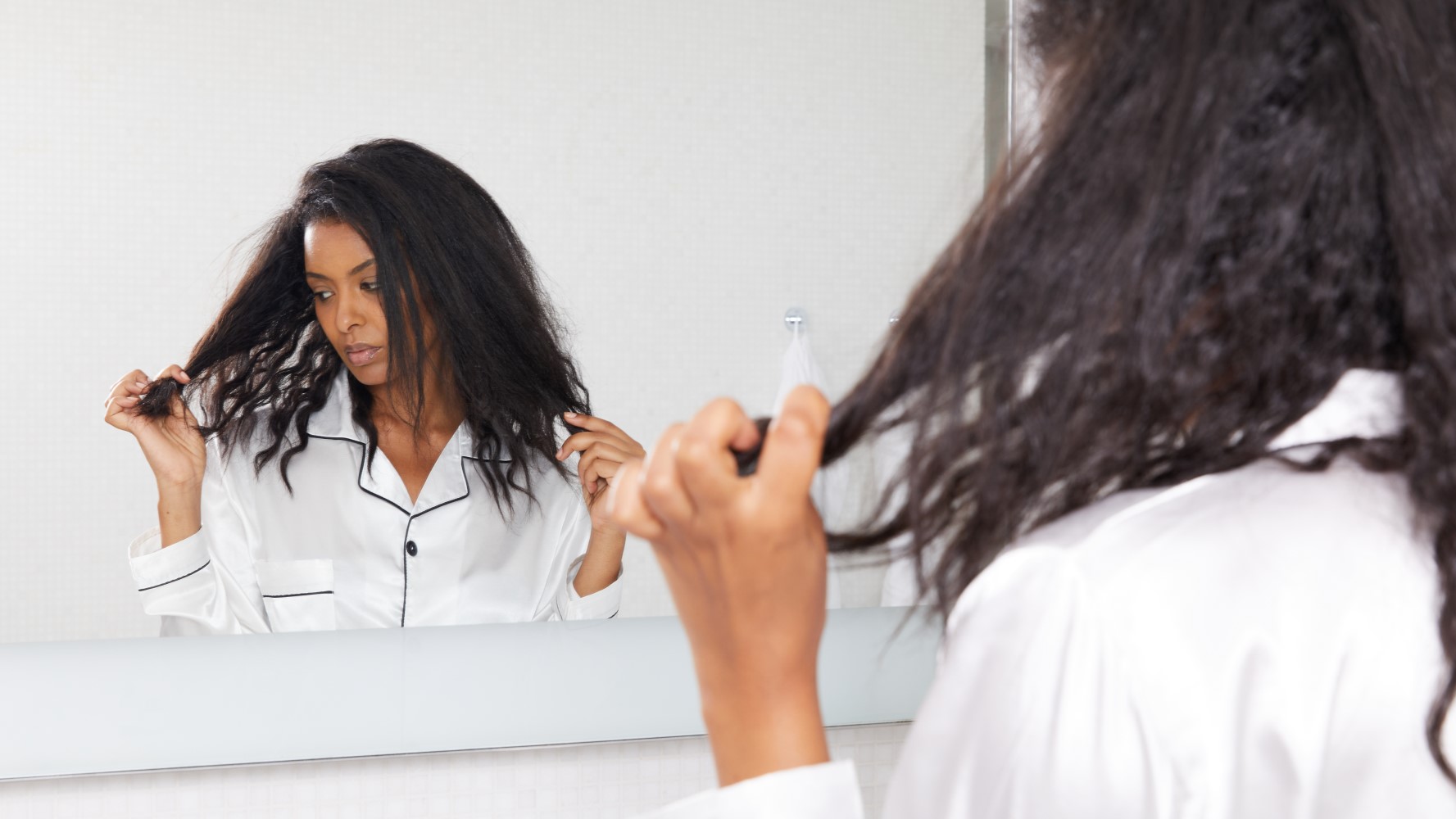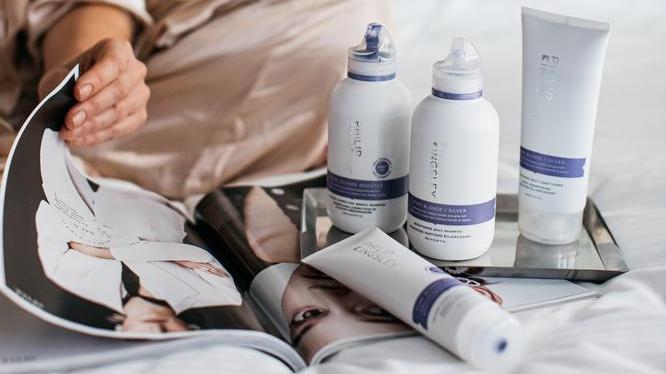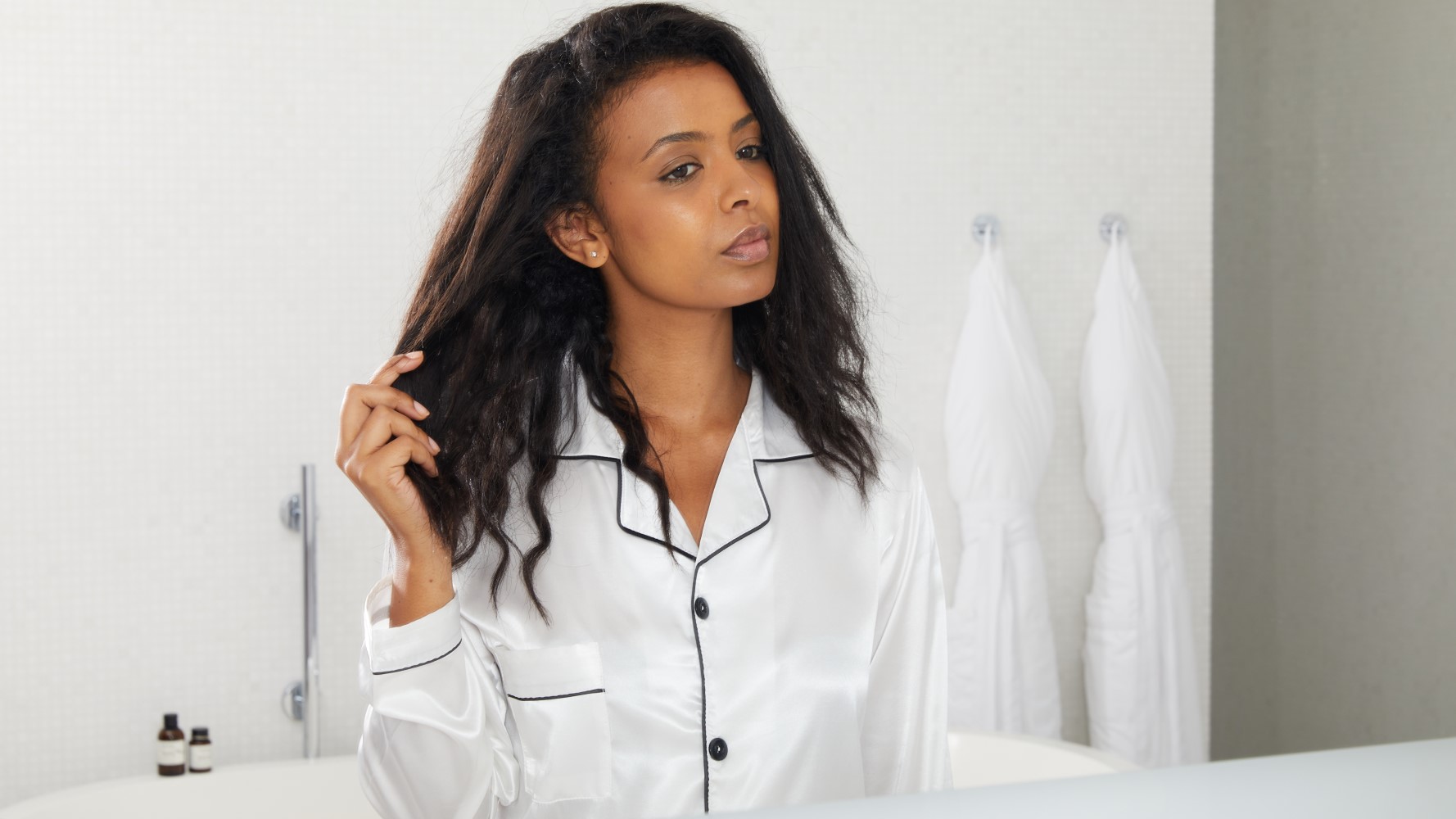CLINIC CONSULTATIONS
If you would like to find out more about the risks and benefits of different hair treatments, our Clinics specialise in all aspects of hair and scalp health. We will be delighted to welcome you.
During a keratin treatment, your stylist will use a mixture of strong chemicals to apply a coat of protein (keratin) to your hair. This process seals your hair’s cuticle (protective outer layer), to prevent the movement of moisture in and out of your strands. Your stylist will rough-dry your hair, then finish it off using a flat-iron, to seal and activate the coating.
The treatment usually takes about 1-3 hours, and lasts about 3 months. (A keratin treatment is different from hair relaxing, or chemical straightening, which lasts until your hair grows out.)
Keratin treatments can be very effective if you have coarse or unruly strands. However, as with any treatment involving strong chemicals and high heats, there are risks involved to your hair.
Are Keratin Treatments Harmful to Your Hair?
Keratin treatments can be extremely satisfying, especially if you have frizzy, hard-to-manage strands — and we know how important it is to feel happy with your style.
However, we urge you to be careful if you decide to go for one. The high heat and strong chemicals used in keratin treatments risk making your hair dry, brittle and prone to breakage. People with fine hair and/or already processed hair should be especially wary, since their more delicate strands may not be able to withstand the treatment without breaking.
Keratin itself is not detrimental to your hair. However, keratin treatments require the application of ceramic irons to seal them, at a minimum temperature of 230˚C (450˚F).
Companies that make and/or supply keratin treatments often claim they improve your hair’s condition. But this is not strictly true. Your hair may look healthier after a keratin treatment, but this is because smooth hair often appears to be in better condition than frizzy hair, since it reflects light better and therefore produces more shine.
Your hair’s condition might improve gradually if you decrease your use of heat-styling aids. You may also be encouraged to wash your hair more frequently after a keratin treatment, since your styling time will be shorter. Frequent washing is known to improve your hair’s condition, feel and appearance.
Keratin Treatments and Formaldehyde
Keratin treatments are often associated with formaldehyde. While they do not actually contain formaldehyde (because formaldehyde is a gas), many contain ingredients that release formaldehyde when they are heated or mixed with water. Examples include methylene glycol, methanediol, methanal and formalin.
These chemicals are extremely effective sealers — they are the ingredients that keep your hair smooth and frizz-free. However, formaldehyde is a known irritant and carcinogen, so we urge you to be cautious. There are some keratin treatments on the market that are formaldehyde-free, but they tend to be less powerful and long-lasting.
We recommend you do your research, as well as talk to your stylist, before deciding on which keratin treatment might be right for you.
If you would like to find out more about the risks and benefits of keratin treatments, our Clinics in London and New York specialise in all aspects of hair and scalp health. We will be delighted to welcome you.
